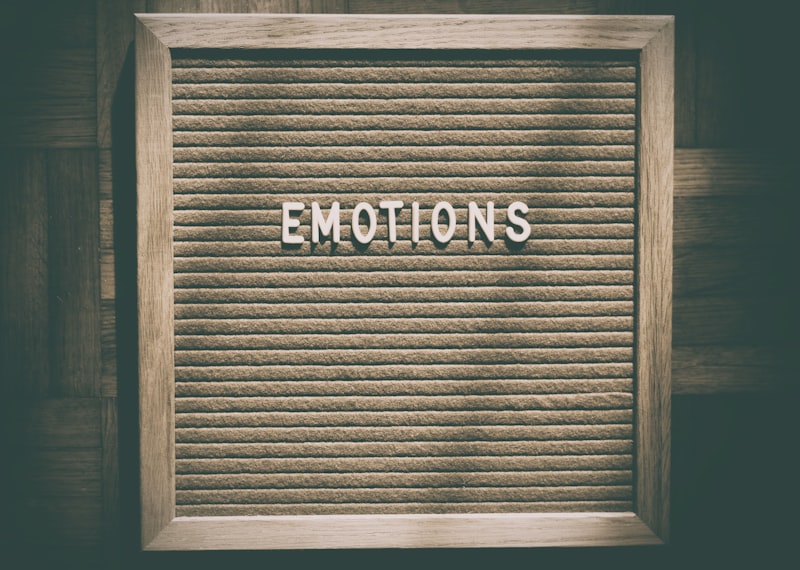- Shortness of breath in dreams can be a manifestation of physical factors like sleep apnea, disrupting REM sleep and causing less dream recall.
- The dreaming mind can create symbolic representations for airway obstruction, such as scenes of choking or being unable to swallow something.
- Indicators of airway obstruction during sleep include recurring dreams of suffocation, physical symptoms upon awakening like tiredness or dry mouth, and loud snoring.
- Shortness of breath in dreams can also have emotional and stress-related interpretations, representing the need to address sources of stress, anxiety, feeling trapped, or being unheard.
Are you curious about the meaning behind dreams where you struggle to breathe? It’s important to explore the symbolism of these dreams, as they can offer valuable insights into our subconscious. Let’s discuss the world of dreams and uncover the significance of being short of breath while dreaming.
Physical Connection to Breathlessness in Dreams

When it comes to understanding dreams about shortness of breath, it’s important to consider the physical connection to this phenomenon. Shortness of breath in dreams can be a manifestation of various physical factors that warrant exploration. In this section, we will discuss the physical perspectives surrounding the symbolism of being short of breath in dreams.
1. Sleep Apnea and Dreaming
Sleep apnea, a condition characterized by interruptions or pauses in breathing during sleep, can have a significant impact on dreaming. This condition disrupts the normal rhythm of sleep and can affect the depth and quality of both sleep and dreams.
People with sleep apnea often experience fewer and shorter REM (rapid eye movement) stages of sleep. REM sleep is the stage where vivid and intense dreaming occurs. Unless a person is sleep-deprived, they won’t experience REM until the end of the first sleep cycle. The interruptions in breathing caused by sleep apnea can disrupt the natural progression through sleep stages, leading to less dream recall and less emotional variation in dreams.
Research has shown that people with obstructive sleep apnea (OSA) have less dream recall than those without OSA. They also report more unpleasant dreams and less emotional variation in their dreams.
Thus, if you experience recurring dreams of being short of breath or suffocating, it may be worth exploring whether you have any symptoms of sleep apnea.
2. Interpretation of Airway Obstruction in Dreams
The dreaming mind is a translator that takes input received while dreaming and translates it into symbolic imagery. When it comes to airway obstruction, the dreaming mind can create various symbolic representations to represent this physical condition.
One common symbolic representation for airway obstruction in dreams is a chimney. Just as a chimney serves as an airway for smoke, the body’s airway can be symbolized as a chimney in dreams. For example, someone with sleep apnea might dream about being stuck upside down in a chimney, representing the obstruction of their airway.
Other symbolic representations for airway obstruction in dreams include scenes of choking, strangulation, or being unable to swallow something large or sharp. Dreams may also incorporate indirect symbolism, such as trying to breathe underwater or in outer space, or using heavy symbolism like a clogged pipe or broken elevator.
It’s important to note that the interpretation of airway obstruction in dreams can be subjective and may vary from person to person. It’s essential to consider the individual’s specific circumstances and experiences when interpreting these dreams.
3. Indicators of Airway Obstruction During Sleep
While dreaming, the body may provide indicators of airway obstruction by influencing the content of the dream. If you suspect that your airway may be constricted during sleep, paying attention to these indicators can help you determine whether further investigation is necessary.
- Dream Imagery
Recurring dreams or frequent dreams about suffocation, choking, or struggling to breathe can be indicative of airway obstruction during sleep. If your dreams consistently involve these types of scenarios, it may be worth considering a potential connection to sleep apnea or other sleep-related breathing issues. - Physical Symptoms upon Awakening
Pay attention to how you feel when you wake up in the morning. If you frequently wake up feeling tired, have headaches, or experience a dry mouth or throat, it could be a sign that your airway was constricted during sleep. These symptoms may indicate that you were not getting enough deep, restorative sleep due to interruptions in breathing. - Snoring
Heavy snoring can be a sign of a restricted airway and may suggest the presence of sleep apnea or another sleep-related breathing issue. If you share a bed or room with someone who notices loud and persistent snoring, it’s worth considering whether it’s related to airway obstruction during sleep. - Voice-Activated Recording
Using a voice-activated recorder placed near your bed can help monitor your sleep. If the recording device picks up loud snoring or labored breathing while you sleep, it may be an indication of airway obstruction. Numerous voice-activated recording apps are available for smartphones and can be used for this purpose.
If you suspect that your airway may be constricted during sleep based on these indicators, it’s important to consult with a healthcare professional for further evaluation and diagnosis. They can provide appropriate guidance and recommend further testing if necessary.
Emotional and Stress-Related Interpretations

Experiencing shortness of breath in dreams can be a distressing and unsettling experience. This sensation, known as breathlessness, often holds significant emotional and stress-related symbolism. Dreams serve as a portal to our inner thoughts and emotions, providing valuable insights into our subconscious fears, concerns, and desires. Understanding the emotional and stress-related interpretations of breathlessness in dreams can offer a deeper understanding of our inner selves and provide guidance for managing stress and anxiety.
1. Relationship Between Stress and Breathlessness in Dreams
Stress is a common aspect of daily life, and it can manifest in various ways, both physically and emotionally. When it comes to dreams, experiencing shortness of breath is often a manifestation of stress and anxiety. These dreams may arise during times of heightened tension or when individuals feel overwhelmed by their circumstances.
Breathlessness in dreams symbolizes the pressure and stress one may feel in their waking life. It reflects the body’s physical response to stress, such as shallow breathing or the sensation of being unable to breathe deeply. These physical manifestations can carry over into dreams, where individuals may feel a tightness in their chest or struggle to catch their breath.
The relationship between stress and breathlessness in dreams signifies the subconscious need to confront and address sources of stress. These dreams may serve as a reminder to establish healthy coping mechanisms, set boundaries, and find ways to alleviate pressure.
2. Manifestation of Anxiety in Dreams
Anxiety is another common emotional state that can manifest in dreams, often leading to feelings of breathlessness. Dreams serve as an outlet for subconscious fears and worries, providing an opportunity for individuals to process and confront their anxieties.
Dreams involving shortness of breath may symbolize the overwhelming nature of anxiety felt in waking life. The feeling of being unable to breathe signifies a sense of suffocation or being trapped by anxious thoughts and emotions. These dreams often reflect the need for individuals to address and manage their anxiety in a healthy and proactive manner.
Symbolically, breathlessness in dreams can represent the desire for release and relief from anxious feelings. It may serve as a reminder to explore effective coping strategies, seek emotional support, and engage in self-care practices that promote relaxation and mindfulness.
3. Symbolism of Feeling Trapped or Suffocated
Feeling trapped or suffocated is a common theme in dreams involving shortness of breath. This symbolism often reflects emotional restrictions and limitations individuals may feel in their waking life.
Dreams that evoke a sense of being trapped or suffocated can symbolize various aspects of an individual’s life. It may represent feeling confined by certain situations, relationships, or personal responsibilities. These dreams serve as a subconscious reflection of the desire for freedom and the need to establish healthy boundaries to prevent overwhelming feelings of suffocation.
Symbolically, breathlessness in dreams signifies the importance of seeking emotional release, expressing oneself authentically, and finding ways to navigate challenging circumstances without feeling trapped. Individuals may be encouraged to break free from oppressive situations, establish clear communication channels, and assert their independence.
4. Choking Sensation: Fear of Being Unheard or Silenced
Dreams involving a choking sensation often represent fears of being unheard or silenced in personal relationships or social settings. Symbolically, the sensation of choking signifies the struggle to express oneself fully and openly.
These dreams may arise from a fear of judgment, rejection, or criticism, leading individuals to feel stifled in their ability to communicate effectively. The choking sensation represents the emotional blockage caused by these fears, highlighting the need for assertiveness and open communication.
Individuals experiencing these dreams may be encouraged to examine their relationships and identify any areas where they feel unheard or stifled. It is important to find ways to express thoughts, emotions, and needs authentically – either directly or through alternative outlets such as journaling or creative expression.
5. Dreams of Escaping: Desire for Freedom and Release
Dreams of running out of breath while trying to escape represent the desire for freedom and release from challenging or suffocating situations. These dreams signify the immense pressure and stress individuals may feel in their waking life, often resulting from demanding responsibilities or overwhelming circumstances.
Feeling breathless while attempting to escape in dreams symbolizes the struggle to keep up with expectations, obligations, or unhealthy relationships. These dreams serve as a subconscious reminder to take time for self-care, establish boundaries, and prioritize personal well-being.
Symbolically, these dreams encourage individuals to explore healthier alternatives, regain control over their lives, and seek solutions to alleviate stress and anxiety. It is crucial to take proactive steps towards creating a more balanced and fulfilling life by addressing the sources of pressure and seeking support when needed.
6. Recap of Emotional and Stress-Related Interpretations
The symbolism of being short of breath in dreams carries significant emotional and stress-related interpretations. It serves as a powerful reflection of the pressures, fears, and anxieties felt in waking life. Understanding these interpretations can provide valuable insights into our emotional well-being and guide us towards managing stress and anxiety effectively.
By recognizing the relationship between stress and breathlessness in dreams, we can take proactive steps towards alleviating pressure and finding healthy coping mechanisms. It is important to address emotional restrictions, establish boundaries, and seek support when feeling trapped or suffocated. Dreams involving a choking sensation represent the need for open communication and finding ways to express oneself fully.
Dreams of escaping symbolize the desire for freedom from overwhelming circumstances. These dreams encourage us to prioritize self-care, establish healthier alternatives, and regain control over our lives. By exploring these emotional and stress-related interpretations, we can gain a deeper understanding of our dreams’ messages and work towards achieving emotional and mental well-being.
Spiritual Perspective of Shortness of Breath in Dreams

In the realm of dreams, the symbolism of shortness of breath can offer profound insights into our spiritual journey and the connection between the body and soul. Dreams provide a unique opportunity to explore our deepest fears, desires, and concerns, and shortness of breath in dreams is no exception. This sensation can hold significant spiritual meaning, encompassing issues of self-discovery, spiritual growth, and the search for a higher purpose.
1. The Connection Between Body and Soul
From a spiritual perspective, the body and soul are intricately intertwined. The breath represents a vital life force that connects these two aspects of our being. In some belief systems, breath is considered a powerful symbol of life itself or represents the presence of a higher power. Dreams featuring shortness of breath can therefore serve as a reminder to pay attention to our spiritual well-being and nourish our connection with our inner selves or higher purpose.
2. Seeking Spiritual Nourishment Through Dreams
Dreams offer a gateway to the inner workings of our minds and can guide us towards spiritual nourishment. Shortness of breath in dreams may indicate a need for personal exploration and a desire to delve deeper into our spirituality. It may signify a yearning for a stronger connection with our inner selves or the divine.
When experiencing shortness of breath in dreams, it is essential to reflect on any dormant spiritual practices or principles that require attention. This dream may serve as a wake-up call to reconnect with religious or spiritual traditions, engage in meditation or prayer, or explore new paths of self-discovery and growth.
3. Reconnecting with Higher Purpose
Dreams featuring shortness of breath could also symbolize a search for one’s higher purpose or a need to realign with one’s true passions and values. If you find yourself struggling to breathe in your dream, it may be an indication that you are not fully embracing your unique gifts or are feeling disconnected from your life’s purpose.
Take the time to explore your dreams and look for messages that may indicate what truly fulfills you. Pay attention to any recurring themes or symbols that emerge in these dreams. By deciphering the deeper meaning, you can find guidance on how to live a more purpose-driven life.
4. The Importance of Dream Interpretation
While feelings of shortness of breath in dreams can hold significant spiritual symbolism, it is crucial to remember that dream interpretation is a subjective and personal process. Each individual’s spiritual beliefs and experiences may influence their interpretation of these dreams. As you reflect on your dreams, consider how they resonate with your personal spiritual journey and inner desires.
Dream journals can be a valuable tool for tracking recurring themes, symbols, and emotions in your dreams. By recording and analyzing these elements, you may begin to see patterns and gain a deeper understanding of your spiritual journey. Consulting with a spiritual guide, mentor, or dream analyst can also provide personalized insights and help you uncover the underlying spiritual messages within your dreams.
5. Practical Tips for Spiritual Growth
In addition to interpreting the spiritual symbolism of shortness of breath in dreams, there are practical steps you can take to foster spiritual growth:
- Meditation and Prayer
Engaging in regular meditation or prayer practices can help quiet the mind, increase self-awareness, and deepen your connection with your inner self or higher power. - Self-Reflection
Set aside time for self-reflection and introspection. Take stock of your values, passions, and personal goals. Consider how well-aligned you are with these aspects of your life and make any necessary adjustments to better honor your authentic self. - Connecting with Nature
Spend time in nature to reconnect with the sacredness of the world around you. Take walks in peaceful settings, tend to plants or gardens, or simply observe the natural beauty that surrounds you. This can help foster a sense of awe and appreciation, and deepen your connection with the divine. - Journaling
Regular journaling can provide a safe space for self-expression and reflection. Write down your dreams, aspirations, and thoughts related to your spiritual journey. Use this practice as a tool for self-discovery and personal growth. - Mindful Living
Cultivate mindfulness in your everyday life by being present in each moment. Pay attention to the details of your experiences, interact compassionately with others, and seek gratitude for the blessings in your life. By practicing mindfulness, you can create space for spiritual growth and awareness.
Navigating Distress and Managing Stress from Breathless Dreams

Experiencing a dream where you are short of breath can be distressing and may leave you feeling anxious or overwhelmed. These dreams, while symbolic in nature, often reflect underlying stress and emotional concerns. Navigating through these dreams and managing the associated stress is crucial for maintaining overall well-being. Here are some strategies and coping mechanisms to help you effectively manage stress and anxiety stemming from breathless dreams:
1. Importance of Addressing Underlying Stresses
Understanding the connection between your dreams and real-life stressors is essential in managing the distress caused by breathless dreams. These dreams often act as a reflection of your subconscious mind, highlighting areas of your life that may be causing emotional strain. By addressing these underlying stresses, you can alleviate the frequency and intensity of these dreams.
To identify and address underlying stresses, consider the following steps:
- Identification
Take time to reflect on your daily life and identify potential stressors. These can include work-related pressures, relationship challenges, financial worries, or personal obligations. - Ranking
Once identified, rank the stressors based on their importance and urgency. This will help you prioritize which areas to focus on first. - Seek Support
Don’t hesitate to seek emotional support from trusted friends, family members, or professionals. Talking about your concerns and worries with others can provide valuable insights and offer different perspectives on how to manage stress effectively. - Action Planning
After identifying and ranking your stressors, develop a plan of action to address them. Break down larger tasks into smaller, manageable steps, making it easier to tackle each stressor one at a time. - Self-Care
Self-care is an essential component of managing stress. Make sure to prioritize activities that promote relaxation, such as engaging in hobbies, practicing mindfulness or meditation, getting enough sleep, and maintaining a healthy lifestyle.
2. Coping Mechanisms for Stress Relief
Dealing with stress and anxiety is a multifaceted process. Employing different coping mechanisms can help alleviate the distress caused by breathless dreams and promote overall well-being. Here are some effective coping mechanisms to consider:
- Breathing Exercises
Deep breathing exercises can help relax the body and mind, reducing stress and anxiety. Practice diaphragmatic breathing by inhaling deeply through your nose, allowing your belly to rise, and exhaling slowly through your mouth. This technique can be done anywhere, at any time. - Meditation and Mindfulness
Engaging in meditation or mindfulness practices can help calm the mind and increase self-awareness. Spending just a few minutes a day focusing on the present moment can significantly reduce stress levels and promote a sense of calmness. - Physical Activity
Engaging in regular physical activity, such as walking, jogging, yoga, or dancing, can help release tension and improve mood. Exercise stimulates the release of endorphins, which are natural mood boosters. - Journaling
Keeping a journal allows you to express your thoughts, emotions, and concerns in a safe and private space. Writing down your feelings related to breathless dreams can provide clarity and insight into underlying stress triggers. - Seeking Professional Help
If stress and anxiety persist despite self-help techniques, consider seeking support from a mental health professional. Therapists or counselors can provide guidance and strategies tailored to your needs.
3. Value of Exploring Meaning of Dreams about Not Being Able to Breathe
Exploring the meaning behind breathless dreams can provide valuable insights into your subconscious thoughts and emotions. While dreams are highly personal, understanding their symbolism can aid in managing stress and anxiety effectively. Here are some reasons why exploring the meaning of these dreams is valuable:
- Self-Reflection
Exploring the meaning of breathless dreams prompts self-reflection, allowing you to gain a deeper understanding of your own thoughts, emotions, and stressors. - Identification of Patterns
By documenting and analyzing your dreams over time, you may notice patterns or recurring themes that can provide insight into underlying stress triggers. - Empowerment
Understanding the meaning behind your dreams can empower you to take control of your emotional well-being. It allows you to address underlying stressors and develop effective coping mechanisms. - Improved Emotional Resilience
By exploring the meaning of your dreams, you can enhance your emotional resilience and become better equipped to manage stress and anxiety when faced with challenging situations. - Validation and Support
The exploration of dream meanings can help you realize that you are not alone in experiencing stress and anxiety. It can provide validation that others have similar dreams and struggles, offering a sense of support and connectedness.
The interpretation of dreams is subjective, and what resonates with one person may not resonate with another. The value lies in exploring the symbolism of breathless dreams within the context of your own experiences and emotions.
Conclusion
Shortness of breath in dreams may hold important messages from both our physical and emotional selves. If you find yourself struggling for air in your dreams, it could be a sign to investigate potential physical causes, such as sleep apnea or airway obstruction. Consider seeking medical advice to ensure your sleep quality is not being compromised. Moreover, remember that dreams can also provide symbolic representations of our emotional state. Take note of any feelings of stress or anxiety that could be manifesting as a sensation of breathlessness in your dreams. Perhaps it’s a call to address the sources of your stress and find ways to alleviate them. So, next time you awake from a dream feeling short of breath, pay attention to both your body and mind, as they may be sending you important messages that deserve your care and attention.










Leave a Reply